|
The campaign in GERMANY (Ruhr and Southern
Germany), April and May 1945.
Monthly Narratives
April 1945
On 3 April 1945 the 463rd Parachute Field Artillery Battalion was
located at Camp Mourmelon, France where it had been in bivouac
re-equipping and training since 1 March 1945. At 0200 hour on 3
April l945 this battalion departed this bivouac area en route to
Neuss, Germany to execute an assigned tactical mission. Arriving in
the vicinity of Neusserweyhe, Germany (248-913) at 1600 hour and
being assigned the mission of direct support artillery for the 327th
Glider Infantry Regiment, this battalion established its Command
Post in this town and the Howitzer batteries closed into firing
position as indicated on overlay "A".
This battalion remained in the positions as indicated on overlay
"A", delivering the normal supporting fires for the 327th Glider
Infantry Regiment. With a view of possible displacement a
reconnaissance was held and survey for alternate positions completed
on 7 April 1945. However, this did not materialize and displacement
was not made. This battalion on 9 April 1945 fired in support of a
raid of company strength executed by the 327th Glider Infantry
Regiment by delivering prearranged defensive fires to cover the
withdrawal of the raiding company to the west side of the Rhine
river.
In addition to the normal supporting fire, this battalion on 12
to 13 April 1945 prepared experimented tests with the recoilless
rifle, 75mm, T-21. On 12 April 1945 the weapon was emplaced so as to
deliver direct fire into enemy territory and 14 rounds HE-AT and 14
rounds HE-48 were expended with excellent results. On 13 April 1945
a battery of four (4) of these weapons was placed in position and
indirect fire conducted under fire directions control. Transfers
were made and results were excellent.
This battalion remained in the same location and continued its
fire in support of the 327th Glider Infantry Regiment until
officially relieved at 1600 hour 17 April 1945.
[Note: The Battalion completed its combat mission in World War
II at 2018 hours 16 April 1945 by "B" Battery firing four rounds at
enemy "Trucks & Personnel," a mission called by Lt. Jack West from
forward observation post call sign "4 Baker."]
Operating in a
non-tactical capacity until 23 April 1945 the battalion then on
23-24 April 1945 executed a rail-truck movement en route to
Shillingstadt, Germany, the last units closing in at 26 April 1945.
From this date until the completion of the month this organization
remained in this same location, not in direct contact with the
enemy.
During the period 3 April 1945 to 17 April 1945, inclusive, this
battalion expended a total of 4,943 rounds of ammunition on targets
as follows, using ground and air OP's.
Personnel --- 107 counterbattery --- 2
Armor --- 2 Self propelled --- 3
Registration --- 50 Vehicles --- 10
Machine Gun --- 26 Miscellaneous --- 26
In addition to the targets fired as indicated above, this battalion
fired one (1) preparation mission, and twelve (12) harassing
missions.
|
463rd Parachute Field Artillery Battalion
APO 472 U. S. Army
9 May l945
SUBJECT: Letter of Transmittal.
TO: AC of S, G-3, 101st Airborne Division, APO 472, U.S.
Army.
1. Transmitted herewith is After Action Reports for the
month of April 1945.
2. CONCLUSION AND CRITIQUE:
During the month of April two things became
very apparent. First the lack of organic transportation
again hindered the movement of the battalion in its tactical
moves. It is becoming more and more apparent that the
solution to the transportation problem of an Airborne
Battalion is the equipping of the battalion as a regular
motorized 155mm Howitzer Battalion with such special
Airborne equipment as might become necessary. After a
Parachute mission organic equipment to be brought in on D +
5 or more days. Second the Recoilless 75 proved a very
effective gun when fired both as direct and indirect fire.
The primary objection being the tremendous flash which would
tend to disclose the battery position for night firing. This
gun would necessitate wide battery fronts as the rear blast
is so terrific that it would not be advisable to having one
gun firing from in front of another, therefore the normal
staggered positions that we now use would give way to
straight line battery front or very wide staggered
positions.
I am of the opinion that the Recoilless 75
may be used as an auxiliary weapon for a regular 105 Truck
drawn battalion and used for anti-tank protection while
operating with 105 equipment.
In case of a Parachute mission, the 75mm Recoilless weapon
could be used as regular 75mm artillery.
JOHN T. COOPER, Jr.,
Lt. Col., F.A.,
Commanding. |
May 1945
On 1 May 1945 the 463rd Parachute Field Artillery Battalion was
located at Schillingstadt, Germany (7330-2972)
(Map, Germany 1/100,000) sheet U-4 Rothenburg).
Though at this time this organization was not in direct contact
with the enemy it did, on this date, executed a tactical move
closing into bivouac at Schwabsoien, Germany (Map, Germany,
1/100,000, sheet X-5, Weilheim, 6315-1198) at about 2300 hour.
Remaining in this location overnight, this battalion received
further movement orders to execute a tactical move forward and at
1500 hour on 2 May 1945 departed Schwabsoien enroute to Starnberg,
Germany (Map, Germany, 1/100,000, sheet X-6) Munchen, 8690-1400),
arriving at this destination at about 1900 hour. On this date the
borrowed transportation was returned and the battalion remained in
this location until 4 May 1945, when at 0630 hour movement by
shuttle was commended. Moving to the assigned area the last portions
of the battalion closed into the new area at about 2000 hour.
In this area the battalion Command Post was established in the
town of Thalham, Germany (Map, Germany, 1/100,000, sheet X-6
Munchen, 1052-1233) with the remainder located in the near-by towns.
The battalion remained in its same location, established security
and patrols, and on 6 May 1945 was assigned the mission of Police
and Military Government of the area as indicated on overlay "A".
This battalion carried out this mission from this same location
until the close of the period on 10 May 1945.
There were no rounds expended during this period from 1 May 1945
to 10 May 1945.
|
HEADQUARTERS
463rd Parachute Field Artillery Battalion
APO 472, U.S. Army
15 June 1945
SUBJECT: Historical
Record for period 11-31 May 1945.
TO : Commanding
General, 101st Airborne Division, APO 472,
U. S. Army (Attention: Division Historian)
During the period indicated there have been no real
security problems. This battalion has set up a city police
force in the city of Bad Reichenhall for the purpose of
enforcing law and order. This police force is composed of
two (2) officers and twenty-one (21) enlisted men. One
patrol, composed of three men with a jeep, patrols the city
twenty-four hours a day. Another patrol with the same
composition operates between the hours of 0800 and 0100.
Between the hours of 1700 and 2130 all enlisted personnel of
the force are on the streets of the city to check military
personnel for uniform, discipline, and military courtesy,
and to check civilian personnel for violation of curfew.
Sixteen (16) enlisted men were apprehended for various
reasons, nine (9) were for violation of uniform regulations,
four (4) for entering German houses without an officer being
present, three (3) were for being drunk in uniform.
Fifty-two (52) civilians were apprehended for various
reasons: nineteen (19) Poles, eight (8) Russians, six (6)
Italians, five (5) French and two (2) Austrians and eleven
(11) Germans were arrested for violation of curfew. One
German we arrested for stealing rations. Over one hundred
(100) persons suspected of being prominent Nazis,
Werewolves, German military personnel in civilian clothes
but not yet discharged, etc., were investigated by the city
police, and same thirty were found to be guilty. This police
force has worked in close cooperation with the Military
Government and the CIC of the Bad Reichenhall area.
Two hours each week has been spent on orientation on
current topics. Situation maps were distributed to each
battery and kept up to date by following the daily
newspapers and the radio. The film "Two Down and One to Go"
was shown to the entire battalion and later organized groups
discussed the film and such topics as readjustment and
redeployment. On 21 May 1945 the Assistant S-3 went to I and
E school in Paris, for six (6) days. A survey
of the battalion was made to determine the courses desired
for unit school. Also all men qualified as instructors for
unit schools were interviewed. An athletic program in
softball, baseball, football, and volley ball, was
inaugurated with special emphasis on inter battery
competition. A battalion track team was organized and
trained for inter battalion and higher competition. The
combat training of the battalion was continued with a view
to maintain in present efficiency. The morale of the
battalion was excellent.
Non-fraternization with the Germans has not been too hard
to adhere to apparently from all indications. The various
batteries of this battalion have had parties for the men.
Foreign women who could prove by their identification papers
that they were DP's were registered with the battalion,
issued DP arm bands and invited to the parties. This kept
the men from getting the urge to disregard the
non-fraternization ruling. This has been the first time that
the men have been allowed to fraternize with women since the
battalion entered Germany. The venereal disease rates have
gone up to some extent but that was to be expected,
especially since the battalion is no longer In combat.
On about 15 May 1945 a survey was made of Bad Reichenhall
and Bayerisch-Gmain in an effort to determine how many
displaced persons were located in those two towns. This
survey was not accurate since many DP's were on the move and
could not be stopped except by extreme measures. The survey
showed approximately four hundred (400) DP's in this area.
On 18 May 1945 one hundred and sixty-nine (169) DP's were
sent to Berchtesgaden Germany to a temporary DP camp. This
number was composed of the following: French-one hundred and
twenty-eight (128), Dutch-twenty-one (21), Belgian-ten (10),
and Spanish-ten (10). On 20 May 1945 forty-nine (49) DP's
were sent to a DP camp at Rosenheim Germany. This number was
composed of the following; French-thirty-three (33),
Dutch-four (4), Belgian-ten (10), and Luxemburg two (2). On
22 May 1945 another survey was made of the Bad
Reichenhall-Bayerisch Gmain area and six hundred and
fifty-eight DP's from Eastern countries were located. This
number included three hundred and twenty-eight (328)
Russians, one hundred and eighteen (118) Poles, eleven (11)
Czechs, and one hundred and one (101) Italians. On 29 May
1945 one hundred ad forty-two (142) Italians were seat to
the DP camp at Fischhorn, Austria. Although every attempt
has been made to try to keep the displaced persons from
traveling around the country on their own there are some
that will not comply with our wishes. No attempt has been
made to use force on these persons but it makes impossible
the task of obtaining complete data on the number of DP's in
any one area at any specified time. The housing situation in
this area is quite bad due to the large number of American
troops, DP's, German evacuees, and German military hospitals
located here.
No discoveries of important treasures, documents, or war
criminals have been made in this area.
One (1) German general, General Tolsdorff, was located in
the villa Monschea on Epp Strasse on 13 May 1945. He was
under medical care at the time so the Villa was placed under
guard by the City Police. On 29 May 1945 the general was
moved to Munich, Germany. The City Police had several drives
during this period in an effort to clear the city of all
German military personnel who had not been properly
discharged. Those drives netted about one hundred (100)
persons who were placed in the PW stockade of the 907th
Glider Field Artillery Battalion which was located at
(84.3-16.5). The city police also apprehended fifty-five
members of the SS, various ranks were included. German PW's
were used by the battalion upon its arrival in the Bad
Reichenhall area to help clean the billets and billeting
area and also otherwise help the battalion get set up in the
area.
The Battalion CP was located in Bad Reichenhall at
(86.1-15.8). Headquarters Battery was also located in this
same area. Battery "A" was located in Bayerisch-Gmain at
(86.5-15.0). Battery "B" was located in Bad Reichenhall in
the Deutscher Kaiser Hotel (85.4-15.8), Battery "C" was
located in Bayerisch-Gmain at (86.1-15.3), and Battery "D"
was located in Bayerisch-Gmain at (87.3-15.9).
Stuart M. Seaton
Major, Field Artillery,
Commanding. |
Pictures made in Germany
Courtesy of Kristy Hazzard
(pictures by PFC Gus Hazzard, B Battery)
|
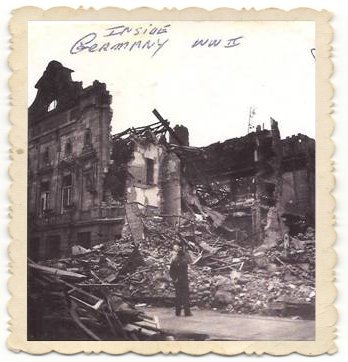
Inside Germany
|
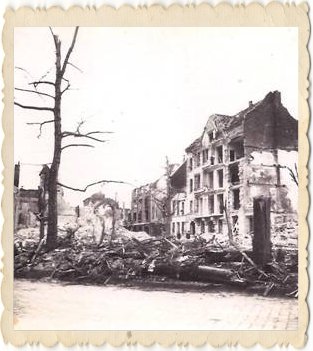
Inside Germany
|
|
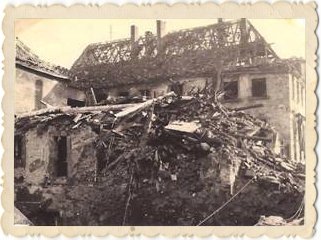
Inside Germany
|
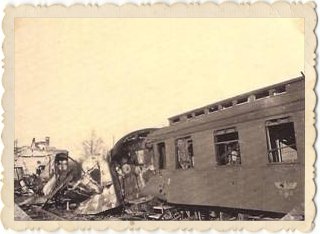
Inside Germany
|
|
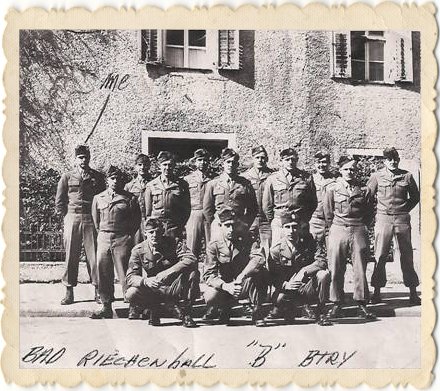
"B" Battery in Bad Reichenhall
(probably in front of the Deutscher Kaiser Hotel).
Left rear is Gus Hazzard.
Bill Tingen: "On the right
rear could be Bushea (guess the way u spell his name).
Could be me 3rd or 4th on left standing, not sure.
Might be Quintanilla next to
Hazzard. These are my guesses, not positive..."
|
|
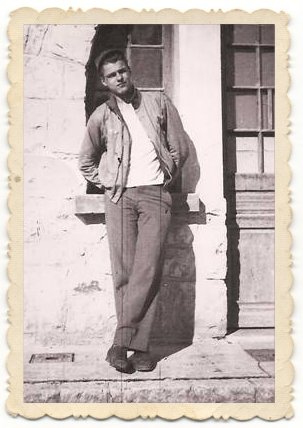
Gus Hazzard in Bad Reichenhall
|
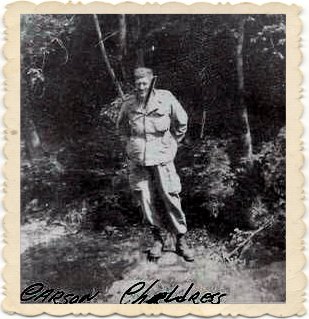
Carson "Booger" Childress
from Cowpens SC.
Booger "gave" a German tank
to his Battalion commander
On Christmas 1944 in Bastogne
as a Christmas present.
|
Courtesy of Jim Growney
(pictures by Tec 5 Earl (Bud) Chew, A Battery)
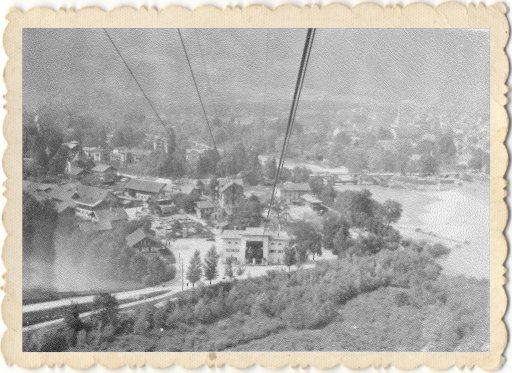
View on cable railway,
most likely Bad Reichenhall.
|
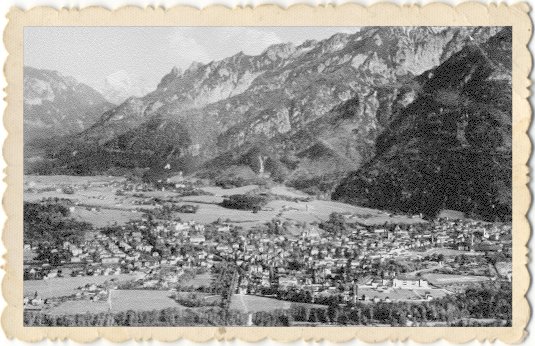
View on Bad Reichenhall.
|
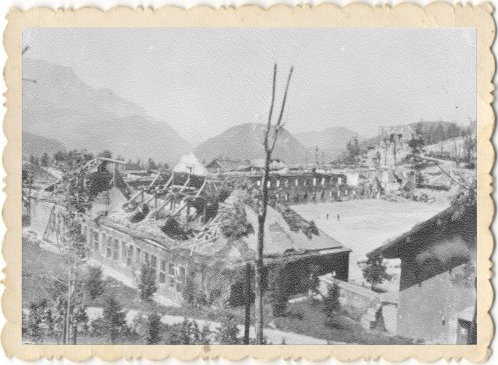
Most likely Bad Reichenhall |
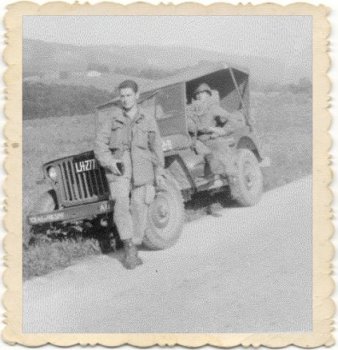
Earl (Bud) Chew in Germany with friend.
Jeep shows markings "101Abn463PF" and "A4" |
From
Wikipedia
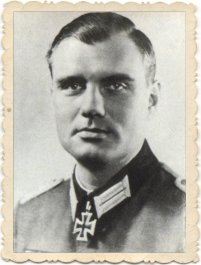
Lieutenant General
Theodor Tolsdorff |
|











